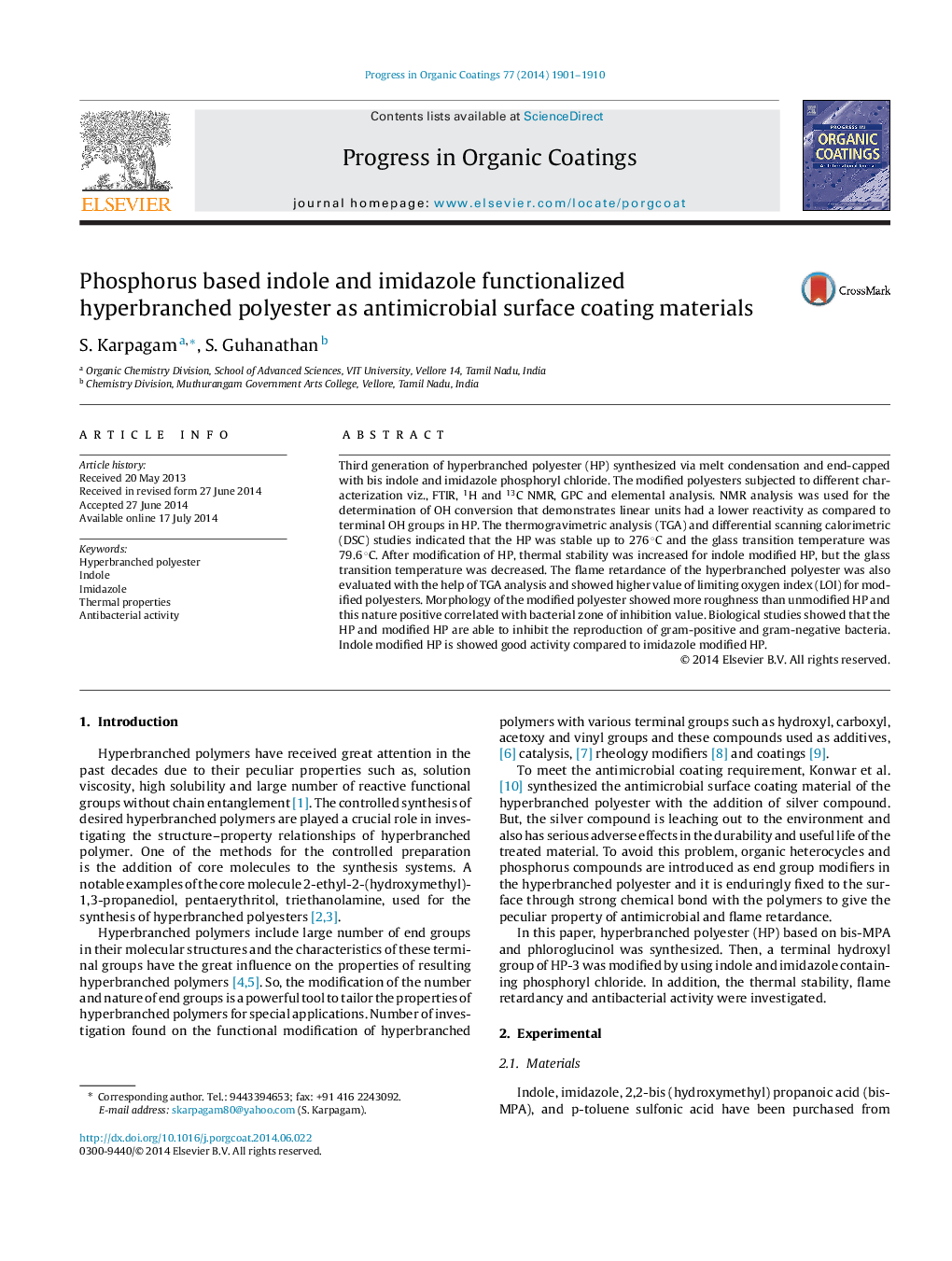| Article ID | Journal | Published Year | Pages | File Type |
|---|---|---|---|---|
| 10397948 | Progress in Organic Coatings | 2014 | 10 Pages |
Abstract
Third generation of hyperbranched polyester (HP) synthesized via melt condensation and end-capped with bis indole and imidazole phosphoryl chloride. The modified polyesters subjected to different characterization viz., FTIR, 1H and 13C NMR, GPC and elemental analysis. NMR analysis was used for the determination of OH conversion that demonstrates linear units had a lower reactivity as compared to terminal OH groups in HP. The thermogravimetric analysis (TGA) and differential scanning calorimetric (DSC) studies indicated that the HP was stable up to 276 °C and the glass transition temperature was 79.6 °C. After modification of HP, thermal stability was increased for indole modified HP, but the glass transition temperature was decreased. The flame retardance of the hyperbranched polyester was also evaluated with the help of TGA analysis and showed higher value of limiting oxygen index (LOI) for modified polyesters. Morphology of the modified polyester showed more roughness than unmodified HP and this nature positive correlated with bacterial zone of inhibition value. Biological studies showed that the HP and modified HP are able to inhibit the reproduction of gram-positive and gram-negative bacteria. Indole modified HP is showed good activity compared to imidazole modified HP.
Related Topics
Physical Sciences and Engineering
Chemical Engineering
Process Chemistry and Technology
Authors
S. Karpagam, S. Guhanathan,
